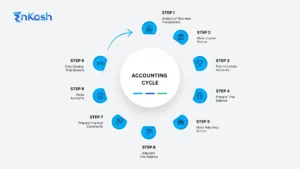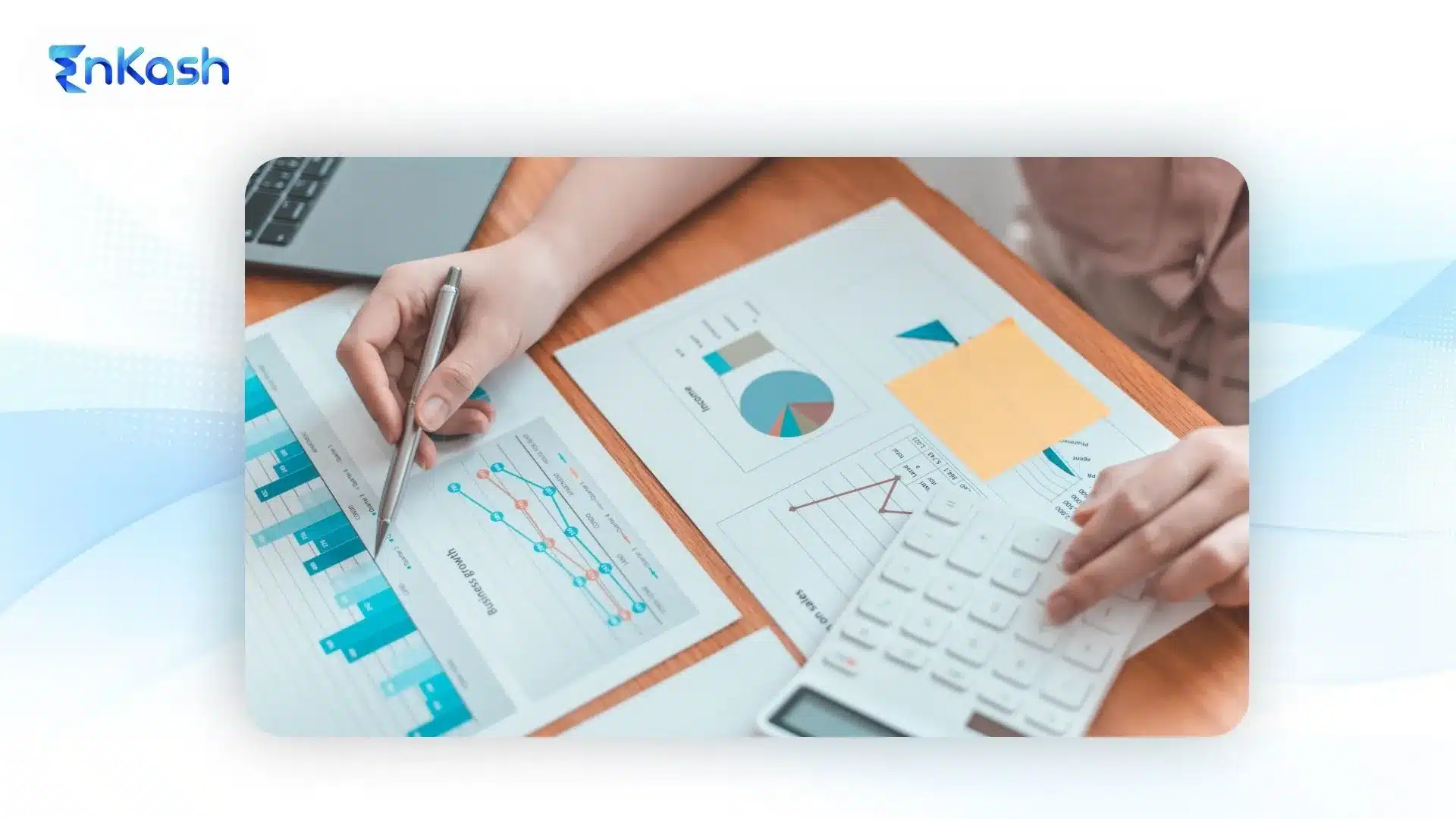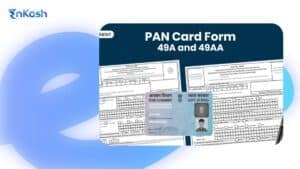Every business needs order in its books. When accounts are left scattered, decisions suffer and accuracy slips. The accounting cycle brings shape to this process. It starts with a simple entry and ends with financial statements that show performance clearly.
So, what is the accounting cycle? To define an accounting cycle is to call it a repeatable sequence. Transactions are captured, moved through records, checked for balance, and then summarised into reports. Each step matters, and missing one breaks the flow.
The accounting period concept makes this cycle practical. A business does not measure profit once in its lifetime. It slices time into months, quarters, or years. Within those slices, the cycle begins, runs its course, and resets for the next round. That rhythm turns numbers into information people can use.
Applied with care, the accounting cycle reduces mistakes and builds trust. Managers can rely on the figures, investors see a fair picture, and regulators get the transparency they expect. At the close of each period, the business knows exactly where it stands. That knowledge drives the path forward.
What is the Accounting Period Concept?
The accounting period concept is simple in idea but powerful in practice. Businesses need a clear window of time to measure how they are performing. That window is the accounting period.
The accounting period concept means that a business divides its continuous life into smaller time slots. These may be months, quarters, or a full year. Within those boundaries, accounts are recorded, adjusted, and reported. Without this structure, it would be impossible to know whether a company made a profit or a loss at any point in time.
An accounting period starts from the first day set by the company and ends on the last day of that chosen span. Some use a calendar year, beginning on January 1 and closing on December 31. Others follow a financial year that runs from April 1 to March 31. The decision depends on regulations, tax laws, and internal policies.
Consider an accounting period concept example. A retailer fixes its period from April to March. All sales, purchases, expenses, and adjustments within these twelve months are captured in that year’s accounts. Any revenue earned in April belongs to the next cycle. This division keeps the books consistent and avoids mixing transactions from different periods.
The concept matters because it shapes when revenue and expenses are recognized. It also ensures comparability. By looking at results period by period, investors and managers can see patterns, track growth, and spot areas of concern. In short, the accounting period concept gives meaning to the cycle itself.
Key Steps in the Accounting Cycle
The accounting cycle steps form the backbone of financial reporting. Each stage builds on the last, shaping raw data into structured accounts. Although the number of steps may vary in different textbooks, the essence remains the same. Some lists mention six, some eight, a few even ten. What matters is that the sequence takes every transaction from its source to the final books.
Identifying and Recording Transactions
It starts with spotting events that carry financial weight. A sale, a purchase, a payment to staff, an invoice received. These are recorded first. Accountants use documents like bills, receipts, or contracts to prove that each event happened. This stage answers the question: what is being measured, and why does it belong in the books?
Journal Entries and Ledger Posting
Once identified, transactions move to the journal. Here, each entry follows double-entry rules with debits and credits. After journalizing, the information flows into the ledger. Posting builds the story of each account, showing how cash changes, how liabilities rise, or how revenue grows. Without this transfer, individual accounts would never reveal their true balance.
Preparing the Unadjusted Trial Balance
After the ledger, balances are checked through a trial balance. Debits must equal credits. If they do not, something went wrong in recording or posting. At this stage, the books reflect activity but not yet accuracy in timing or adjustments.
Making Adjusting Entries
The cycle now deals with timing issues. Some expenses have been incurred but not recorded, and some revenues earned but not yet billed. Adjusting entries fix this. Depreciation, accrued salaries, and prepaid rent ensure the books respect the matching principle.
Adjusted Trial Balance and Financial Statements
Once adjustments are complete, another trial balance is prepared. This adjusted version gives a clearer picture and is used to prepare statements. Profit and loss accounts show performance, balance sheets reveal position, and cash flow statements highlight the movement of funds. Together, they answer the most common question in finance: how did the business do this period?
The Last Step of the Accounting Process – Closing Entries
Temporary accounts, such as revenues and expenses, cannot remain open forever. They are closed into permanent accounts like retained earnings. This clears the slate for the next cycle. Many systems also prepare a post-closing trial balance to double-check accuracy. This is widely recognized as the last step of the accounting process.
The flow is simple but strict. From raw events to final closure, the accounting cycle steps create order. Skip one, and errors spill across the books. Follow each carefully, and the cycle delivers reliable results for every accounting period.
Events in Accounting and Their Impact
Every transaction recorded in accounts begins with an event. Only events that can be measured in money and that affect assets, liabilities, or equity are included. A purchase of raw materials, the payment of wages, or the collection of receivables are clear examples. Each of these changes the financial position of the business and therefore, enters the records.
Events may be external, such as buying supplies or selling products. They may also be internal, such as calculating depreciation or recording accrued expenses. Both types play a role in the accounting cycle since they provide the activity that feeds into the process.
The link with the accounting period concept is direct. When an event takes place, it must be recorded in the period to which it belongs. This ensures that financial reports are consistent and that revenue and expenses are matched with accuracy.
Events form the starting point of the accounting cycle steps. They move through journals, ledgers, trial balances, adjustments, and finally to statements and closing entries. Without events, the cycle remains empty. With them, it becomes a complete record of business activity.
The Accounting Process Flowchart
The flow of the accounting cycle can be visualized as a chart that connects each step. It begins with recording events in the journal and continues until the books are closed at the end of the accounting period.
An accounting cycle diagram places these steps in sequence. The first stage is transaction identification. From there, entries move to the journal, then into ledger accounts. After this, an unadjusted trial balance is prepared to confirm that total debits equal total credits. Adjustments follow, correcting timing issues or capturing entries that were missed.
Once adjustments are made, the adjusted trial balance is ready. This balance is the foundation for preparing financial statements. Reports on income, position, and cash flow are created at this stage. The cycle then ends with closing entries, clearing temporary accounts and leaving only permanent balances in place.
An accounting process chart shows these steps as a continuous loop. The cycle does not stop with closing entries. The post-closing balance leads directly into the new period, linking one cycle with the next. The chart helps to simplify the entire process, making the flow of accounting work easier to follow.

Applying the Accounting Cycle in Real Scenarios
The accounting cycle steps are easier to understand when applied to day-to-day business activity. A single accounting period can show how these stages connect and why each one matters.
A small trading company purchases goods worth 1,00,000 on credit. This event is first identified, then recorded in the journal as a debit to inventory and a credit to accounts payable. The entry moves into the ledger, where balances for inventory and creditors are updated.
Later, the company sells part of this stock for 1,50,000. Cash received is recorded as a debit, revenue as a credit, and any balance due from customers as accounts receivable. The sale moves into the ledger and changes the balances for cash, revenue, and receivables.
At the end of the accounting period, adjustments are made. Salaries earned by employees but not yet paid are added as an expense and payable. Depreciation on equipment is recorded as well. These adjustments ensure that income and expenses match the period in which they belong.
The adjusted trial balance then becomes the source for preparing statements. Profit and loss shows revenue against expenses, the balance sheet lists assets and liabilities, and cash flow explains the movement of funds.
The cycle finishes with closing entries. Revenue and expense accounts are cleared into equity, leaving only permanent balances in place. This action resets the books so that the next period begins with a clean slate.
Challenges and Modern Practices in the Accounting Cycle
The accounting cycle provides structure, yet real-world application brings its share of difficulties. Some are tied to human error, others to timing or interpretation. These are the most common challenges:
Recording mistakes: A missed invoice or a wrong entry can throw the trial balance off and distort results.
- Posting errors: Incorrect transfers from the journal to the ledger often lead to mismatched balances.
- Late adjustments: Delays in capturing accruals, prepayments, or depreciation affect the accuracy of statements.
- Timing pressures: Short reporting deadlines make it hard to prepare and review accounts with care.
- Interpretation issues: Judgments about revenue recognition, expense allocation, or disclosure often lead to inconsistencies.
Modern practice is reshaping how these challenges are managed. Software now automates posting, prepares trial balances instantly, and generates draft statements. Continuous closing spreads adjustments throughout the period, reducing last-minute pressure. Even with these tools, the need for professional judgment remains constant. Decisions on when to recognize income or how to value an asset still rest with accountants, not machines.
The accounting cycle steps themselves have not changed, but the pace, the tools, and the expectations have. Errors and timing remain hurdles, while automation and ongoing reporting are becoming the path forward.
Importance of the Accounting Cycle for Business Success
The accounting cycle is more than a routine. It shapes how businesses understand their position, manage risks, and meet obligations. Without it, numbers would lack structure and financial reports would lose credibility.
The impact can be seen in several ways:
- Reliable decision making: Managers depend on accurate statements to plan budgets, allocate resources, and track performance across each accounting period.
- Investor confidence: Consistent reporting builds trust and makes it easier to raise funds or attract new partners.
- Regulatory compliance: The cycle ensures that records meet legal and standard-based requirements, reducing penalties and audit risks.
- Audit preparedness: A complete set of books, supported by trial balances and closing entries, creates a clear audit trail.
- Comparability over time: Regular cycles allow results from different periods to be measured side by side, revealing patterns and trends.
The accounting cycle steps give order to the constant flow of transactions. By the end of each cycle, the business gains a clear snapshot of its financial health. This clarity drives better strategy, stronger governance, and long-term stability.
Conclusion
The accounting cycle gives structure to the flow of financial events. It begins with the smallest transaction and moves through recording, posting, balancing, adjustments, statements, and closing entries. By the end of each accounting period, the books reveal a true picture of performance and position.
The accounting period concept is what makes this process meaningful. Dividing time into months, quarters, or years allows businesses to measure results regularly instead of waiting for a distant future. Each slice of time becomes a mirror of how the business has fared.
When the accounting cycle steps are followed carefully, errors are reduced, compliance is maintained, and decisions are backed by reliable numbers. The cycle also creates trust for investors, regulators, and anyone who depends on accurate reports.
For any organization, the cycle is more than bookkeeping. It is the rhythm that links daily activity with long-term vision. Every closing entry resets the stage, and every new period begins with a chance to record, measure, and improve again.
FAQs
1. How does the accounting cycle differ from the bookkeeping process?
Bookkeeping focuses on recording daily transactions, while the accounting cycle takes those records through a structured path that ends with financial statements and closing entries. The cycle ensures adjustments are made, compliance is checked, and final reports are created, making it broader and more analytical than simple bookkeeping.
2. Can the accounting cycle be shortened for startups or small businesses?
Yes, smaller firms can adopt a simplified version of the accounting cycle steps. They may skip detailed adjustments or produce only basic statements at period-end. However, even a shortened cycle should maintain the sequence of recording, balancing, and closing to ensure accuracy and a clear view of financial health.
3. How does technology influence the accounting cycle today?
Modern accounting software automates many parts of the accounting cycle diagram, such as posting to ledgers, preparing trial balances, and generating financial reports. Automation reduces manual errors and speeds up period-end closing. Still, professional judgment is required for decisions like revenue recognition, expense allocation, and handling complex adjustments.
4. Why are adjusting entries critical in the accounting cycle?
Adjusting entries align income and expenses with the accounting period concept. They correct timing mismatches by recording accrued revenues, unpaid expenses, or depreciation. Without these adjustments, financial statements would misstate results, either overstating profit or understating liabilities, and this would mislead managers, investors, and regulators who rely on accurate reports.
5. What role does the trial balance play in the cycle?
A trial balance ensures that debits and credits remain equal after journalizing and posting. It acts as a checkpoint before adjustments and statements are prepared. An unadjusted trial balance helps identify arithmetic mistakes, while an adjusted version confirms accuracy after corrections. Both safeguard the integrity of the accounting cycle steps.
6. How does the accounting period affect tax reporting?
The chosen accounting period concept decides when income and expenses are reported for taxation. If the period runs from April to March, all activity within that timeframe is included in the return. A mismatch in period recognition can lead to tax errors, penalties, or regulatory scrutiny, making proper alignment essential.
7. What happens if a business skips closing entries?
If closing entries are skipped, temporary accounts like revenue and expenses carry balances into the next period. This distorts results by mixing figures across cycles. Completing the last step of the accounting process ensures a clean start, with only permanent accounts such as assets, liabilities, and equity moving forward.
8. How do external events influence the accounting cycle?
External events such as market shocks, supplier defaults, or sudden regulatory changes may trigger accounting entries. These events can require provisions, write-offs, or disclosures. By capturing such impacts within the correct accounting period, the accounting cycle ensures financial statements reflect not just routine activity but also extraordinary developments.
9. Can interim financial statements follow the full accounting cycle?
Yes, interim statements such as quarterly reports still follow the accounting cycle steps. Transactions are recorded, adjustments are made, and reports are prepared for the shorter period. The difference lies in the level of detail, since interim reports may involve estimates or simplified disclosures compared to full-year accounts.
10. How does the accounting cycle support audit readiness?
The accounting process chart creates a clear trail from source documents to final statements. Each step leaves evidence, from journal entries to adjustments and closing balances. Auditors use this trail to test accuracy, compliance, and reliability. A complete cycle not only speeds up audits but also strengthens trust in reported numbers.












